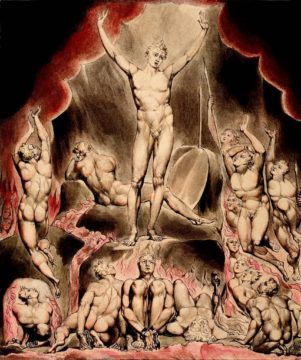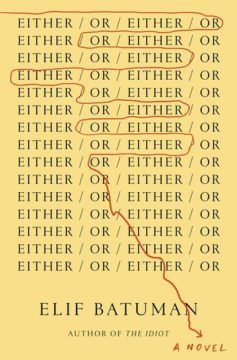Category: Recommended Reading
Louis Trintignant (1930 – 2022) Actor
Thinking Like a Scientist Will Make You Happier
Brian Gallagher in Nautilus:
 Jim Al-Khalili has an enviable gig. The Iraqi-British scientist gets to ponder some of the deepest questions—What is time? How do nature’s forces work?—while living the life of a TV and radio personality. Al-Khalili hosts The Life Scientific, a show on BBC Radio 4 featuring his interviews with scientists on the impact of their research and what inspires and motivates them. He’s also presented documentaries and authored popular science books, including a novel, Sun Fall, about the crisis that unfolds when, in 2041, Earth’s magnetic field starts to fail. His latest book, The Joy of Science, is his response to a different crisis.
Jim Al-Khalili has an enviable gig. The Iraqi-British scientist gets to ponder some of the deepest questions—What is time? How do nature’s forces work?—while living the life of a TV and radio personality. Al-Khalili hosts The Life Scientific, a show on BBC Radio 4 featuring his interviews with scientists on the impact of their research and what inspires and motivates them. He’s also presented documentaries and authored popular science books, including a novel, Sun Fall, about the crisis that unfolds when, in 2041, Earth’s magnetic field starts to fail. His latest book, The Joy of Science, is his response to a different crisis.
“The Joy of Science was motivated by this sense that a lot of us have, that public discourse is becoming increasingly polarized,” Al-Khalili tells Nautilus. “There seems to be a rise in irrational, anti-scientific thinking, and conspiracy theories. And there’s no room for debate, particularly amplified by the internet and social media.” His message is that we should all be thinking more critically. “If we could export some of the ideas of science, when science is done well, into everyday life, I think we would all be happier, more empowered.”
Al-Khalili tells me that doling out advice is quite the departure for him. But after a long career in physics and science communication, he says with a laugh, “I’ve reached that stage where I arrogantly think I can impart wisdom to the world.” In our interview, Al-Khalili discusses, among other things, the unprecedented level of cognitive dissonance nowadays, what’s wrong with Occam’s razor, and whether ideological thinking conflicts with a scientific mindset. He also defends “scientific realism,” and walks me through a puzzle about light that Einstein dreamt up as a teenager.
More here.
Saturday, June 18, 2022
Developmental Realism
 Justin Vassallo in Phenomenal World:
Justin Vassallo in Phenomenal World:
In the wake of Donald Trump’s surprise victory in the 2016 US presidential election, defenders of the postwar liberal international order panicked over the return of their bête noire: neomercantilism. Signs of nationalist protectionism meant the revival of neomercantilism, a surge in trade wars, and the loss of the cooperation and openness that underpins globalization.
In light of the resurgent emphasis on the importance of energy independence, greater fixed investment, and reviving domestic production, now is a critical time to acquire a better understanding of this misunderstood and oversimplified philosophy. As defined by political scientist Eric Helleiner in his engrossing new book The Neomercantilists: A Global Intellectual History, neomercantilism was, before 1939, “a belief in the need for strategic trade protectionism and other forms of government economic activism to promote state wealth and power in the post-Smithian age.” Helleiner’s book is essential for grasping earlier theories of state-led development that diverged from classical liberalism, as well as their relevance in an era where pandemic-induced supply chain disruptions and Russia’s war in Ukraine have further eroded confidence in globalization.
One of Helleiner’s central theses is that neomercantilism had a truly global span, with endogenous roots outside of Western Europe and North America.
More here.
Raymond Geuss Does Not Think Like a Liberal
 Nóra Schultz in Tocqueville 21:
Nóra Schultz in Tocqueville 21:
Reading Raymond Geuss’s Philosophy and Real Politics a couple years ago was like a breath of fresh air. Geuss was writing about exactly the things that many of us young, left-leaning students at Cambridge wanted to think through at the time: namely, how the rise of authoritarian politics in certain parts of the world seemed to have given Western liberalism a renewed importance and intellectual force, thereby shrinking the space for systematic critique of liberalism’s own damaging political and economic practices. And how, making matters more difficult, radical politics – especially at universities – had increasingly become an identity to assume, rather than a meaningful commitment to the historical notion of organising for large scale social transformation. Moreover, there was the frustrating intellectual problem of how to maintain the critical force of Marxist thought while acknowledging the historical failures of “actually existing socialism”.
Geuss seemed to have it all: he offered relentless criticism of liberalism, but without the reactionary baggage present in some fashionable works of “post-liberalism”; he showed a way of thinking about politics through a non-sectarian, anti-utopian Marxist lens; and he conveyed a deep knowledge of the history of political thought and philosophy. The combination was bound to impress. It was simply inspiring to see a vision of political philosophy that was both politically radical, and defined with reference to the real world rather than abstract, value-driven debates. Moreover, Geuss’s realism seemed to offer both new avenues of theoretical research, and the (re-)discovery of marginalised texts and authors.
More here.
Old not Other
 Kate Kirkpatrickis and Sonia Kruks in Aeon:
Kate Kirkpatrickis and Sonia Kruks in Aeon:
Old age is not exactly a time of life that most of us welcome, although globally speaking it is a privilege to reach it. In Western societies, the shocked realisation that we are growing old often fills us with alarm and even terror. As Simone de Beauvoir writes in her magisterial study of the topic, La vieillesse (1970) – translated in the UK as Old Age, and in the US as The Coming of Age (1972) – old age arouses a visceral aversion, often a ‘biological repugnance’. Many attempt to push it as far away as possible, denying that it will ever happen, even though we know it already dwells within us.
In fleeing from our own old age, we also seek to distance ourselves from its harbingers – from those who are already old: they are ‘the Other’. They are (with some exceptions) viewed as a ‘foreign species’, and as ‘outside humanity’. Excluded from the so-called normal life of society, most are condemned to conditions where their sadness, as Beauvoir puts it, ‘merges with their consuming boredom, with their bitter and humiliating sense of uselessness, and with their loneliness in the midst of a world that has nothing but indifference for them’. Beauvoir’s work sets out to show how old people are viewed and treated as the Other ‘from without’ and also – by drawing on memoirs, letters and other sources – to present their experiences ‘from within’. Her aim is to ‘shatter’ what she calls the ‘conspiracy of silence’ surrounding the old for, she insists, if their voices were heard, we would have to acknowledge that these were ‘human voices’ (emphasis added).
More here.
I thought the Jan. 6 committee wouldn’t matter. I was wrong
Max Boot in The Washington Post:
 I admit to having been skeptical, ahead of time, of the hearings planned by the House select committee investigating the events of Jan. 6, 2021. What more is there to be said, I wondered? The evidence of Donald Trump’s guilt in inciting an insurrection was already so obvious that it was hard to imagine that the committee would have much to add. This was not, after all, a situation such as Watergate, where the scandal happened behind closed doors. The entire nation saw Trump’s incendiary remarks and tweets, and the riot that followed, on national television.
I admit to having been skeptical, ahead of time, of the hearings planned by the House select committee investigating the events of Jan. 6, 2021. What more is there to be said, I wondered? The evidence of Donald Trump’s guilt in inciting an insurrection was already so obvious that it was hard to imagine that the committee would have much to add. This was not, after all, a situation such as Watergate, where the scandal happened behind closed doors. The entire nation saw Trump’s incendiary remarks and tweets, and the riot that followed, on national television.
I am happy to say I was wrong. The committee’s hearings are exceeding expectations, because it is not behaving like a typical congressional committee. There is no grandstanding and no preening. There are no petty partisan squabbles. There is not even the disjointedness that normally occurs when a bunch of politicians are each given five minutes to question each witness. There is only the relentless march of evidence, all of it deeply incriminating to a certain former president who keeps insisting that he was robbed of his rightful election victory.
The committee’s recent hearings — there have been two in the past week, with more planned — have been organized like carefully choreographed television productions, and I mean that as a compliment. The committee has been focused on doing what all good television productions, whether factual or fictional, do: telling a story that enthralls the viewer.
More here.
The Only Surviving Manuscript of ‘Paradise Lost’
Lauren Christensen in The New York Times:
 When the Restoration ended his career in Britain’s Commonwealth government in 1660, John Milton turned his full attention to the verse tragedy he’d started around 1640, then called “Adam Unparadised.” By now in his 50s, blind and ailing, Milton composed “Paradise Lost” aloud, in bed or (per witnesses) “leaning backward obliquely in an easy chair, with his leg flung over the elbow of it,” memorizing the stanzas to be transcribed in another’s hand.
When the Restoration ended his career in Britain’s Commonwealth government in 1660, John Milton turned his full attention to the verse tragedy he’d started around 1640, then called “Adam Unparadised.” By now in his 50s, blind and ailing, Milton composed “Paradise Lost” aloud, in bed or (per witnesses) “leaning backward obliquely in an easy chair, with his leg flung over the elbow of it,” memorizing the stanzas to be transcribed in another’s hand.
Of the resulting 10,000-line manuscript he sent to the Stationers’ Company in London in 1665, only 798 lines survive. These 33 pages correspond to Book 1 of 10 in the first, 1667 edition; a second edition, in 1674, would regroup the poem into 12 books. In the penmanship of a single, professional scribe, the pages are almost certainly a fair copy: a final, corrected version compiling the rough drafts that, in Milton’s case, would have borne the distinct markings of his various amanuenses, as they received his dictations.
More here.
Saturday Poem
Servants
My mother gone for months, my brothers away at school,
I’d open the dictionary and there were:
Dishabille, the French governess, or Scurrilous, the riding master,
Worry always at her needle, or Corpulent, the cook,
all so much more interesting
than the kids at school or my father’s weekend cronies.
They even smelled better
and the smells had stories to tell:
Nutmeg, Hedge Garlic, Turmeric, Clove.
They just needed a little prompting.
I liked to imagine words putting up their feet by the fire
and talking of their masters.
stiff-backed Faithful, snail-faced Obedient,
mousy Useful, usually discreet Wisdom
siphoning off a little of their lord’s best brandy
and telling a few off-color jokes,
even footmen and chambermaids deserving a life.
Misery, Rancor, Mischief, Solitude, over-worked under-
paid help that had done their best
to raise me. So what if I couldn’t open my mouth
at school? So what if I had trouble talking
to my father? I was included in the Ribald
secret life of vowels and consonants,
Raillery, Rumor, Escapade,
my nanny, my scullery maid, my gamekeeper,
their belly laughs in the stables,
winks in the parlor, their carryings-on beneath the stairs.
by Christopher Bursk
from The First Inhabitants of Arcadia
the University of Arkansas Press, 2006
Elif Batuman’s Experiment In Life-As-Art-As-Art
Rebecca Panovka at Bookforum:
 EARLY IN ELIF BATUMAN’S NEW NOVEL Either/Or, she quotes a blurb on the front of Kazuo Ishiguro’s An Artist of the Floating World, extracted from its 1986 review in the New York Times. “Good writers abound—good novelists are very rare,” the critic theorizes, deeming Ishiguro “not only a good writer, but also a wonderful novelist.” For Either/Or’s narrator, the distinction comes as a shock. Since she was young, Selin has aspired to become a novelist, and she views much of her life to date as training for that vocation. Assessing herself according to the reviewer’s implied rubric, Selin realizes that her facility with language, her sparkling insights and clever turns of phrase, may not be sufficient. “It was what I had been counting on,” she thinks. “My sense of being a good writer. My stomach sank with the knowledge of how wrong I had been.” This is in some sense the anxiety that haunts Either/Or: Batuman is demonstrably, incontrovertibly a good writer—but is she a good novelist? (And what is a good novel anyway?)
EARLY IN ELIF BATUMAN’S NEW NOVEL Either/Or, she quotes a blurb on the front of Kazuo Ishiguro’s An Artist of the Floating World, extracted from its 1986 review in the New York Times. “Good writers abound—good novelists are very rare,” the critic theorizes, deeming Ishiguro “not only a good writer, but also a wonderful novelist.” For Either/Or’s narrator, the distinction comes as a shock. Since she was young, Selin has aspired to become a novelist, and she views much of her life to date as training for that vocation. Assessing herself according to the reviewer’s implied rubric, Selin realizes that her facility with language, her sparkling insights and clever turns of phrase, may not be sufficient. “It was what I had been counting on,” she thinks. “My sense of being a good writer. My stomach sank with the knowledge of how wrong I had been.” This is in some sense the anxiety that haunts Either/Or: Batuman is demonstrably, incontrovertibly a good writer—but is she a good novelist? (And what is a good novel anyway?)
more here.
Elif Batuman and Sibel Horada
Philosophical Bohemians: On Peter Neumann’s “Jena 1800”
Richard Eldridge at the LARB:
 No wonder, too, then, that there is a current public of soi-disant intellectuals eager to learn about past experiments in living, especially those with a significant philosophical dimension. And so we have Peter Neumann’s Jena 1800: The Republic of Free Spirits (translated by Shelley Frisch), “a fascinating and highly readable story of ideas, art, love, and war,” as one blurb has it, and a picture of “a world intoxicated with the possibilities of thought,” according to another. Jena in 1798 to 1800 was a backwater provincial city of 5,000 residents, one-fifth of whom were students. Initially attracted by the presences at the university first of Karl Leonhard Reinhold and then J. G. Fichte, both of whom were associated with the free thinking of Kantianism and the French Revolution, a circle of intellectual friends, including women as equals as well as men, formed around the brothers August and Friedrich Schlegel.
No wonder, too, then, that there is a current public of soi-disant intellectuals eager to learn about past experiments in living, especially those with a significant philosophical dimension. And so we have Peter Neumann’s Jena 1800: The Republic of Free Spirits (translated by Shelley Frisch), “a fascinating and highly readable story of ideas, art, love, and war,” as one blurb has it, and a picture of “a world intoxicated with the possibilities of thought,” according to another. Jena in 1798 to 1800 was a backwater provincial city of 5,000 residents, one-fifth of whom were students. Initially attracted by the presences at the university first of Karl Leonhard Reinhold and then J. G. Fichte, both of whom were associated with the free thinking of Kantianism and the French Revolution, a circle of intellectual friends, including women as equals as well as men, formed around the brothers August and Friedrich Schlegel.
Friedrich and Dorothea Veit (Moses Mendelssohn’s divorced daughter) set up house in Leutragasse 5, where they were soon joined by August and his wife, Caroline (widow to Johann Böhmer and later to marry Friedrich Schelling after divorcing August).
more here.
Friday, June 17, 2022
French Cigarettes and a Lot of Coffee: On Skye C. Cleary’s “How to Be Authentic”
Rebecca Brenner Graham in the Los Angeles Review of Books:
 Although existentialist philosophers rarely labeled themselves as such or agreed on a definition of what they were doing, existentialism is a coherent and sound philosophy. It begins with the claim that “existence precedes essence,” meaning that people enter the world (they exist) before they can be said to have a fixed definition (or essence). They are free to create their own essence, and with this freedom comes responsibility. The contrast between how strange it is to exist and the reality that we are here is called “absurdity.” From absurdity, nihilists would avow that life is meaningless, and thus do whatever they want. Existentialists, however, typically reject nihilism and embrace authenticity. For Martin Heidegger, authenticity was related to our “being toward death.” For Friedrich Nietzsche, the “eternal return of the same” counsels us to live as if our life will repeat itself eternally.
Although existentialist philosophers rarely labeled themselves as such or agreed on a definition of what they were doing, existentialism is a coherent and sound philosophy. It begins with the claim that “existence precedes essence,” meaning that people enter the world (they exist) before they can be said to have a fixed definition (or essence). They are free to create their own essence, and with this freedom comes responsibility. The contrast between how strange it is to exist and the reality that we are here is called “absurdity.” From absurdity, nihilists would avow that life is meaningless, and thus do whatever they want. Existentialists, however, typically reject nihilism and embrace authenticity. For Martin Heidegger, authenticity was related to our “being toward death.” For Friedrich Nietzsche, the “eternal return of the same” counsels us to live as if our life will repeat itself eternally.
Some French existentialists, however, posited more nuanced ideas of authenticity that engaged with other people, systems of oppression, and the world. Skye C. Cleary’s How to Be Authentic: Simone de Beauvoir and the Quest for Fulfillment explores Simone de Beauvoir’s ideas of existential authenticity and applies them to life today.
More here.
Ten years after the Higgs, physicists face the nightmare of finding nothing else
Adrian Cho in Science:

A decade ago, particle physicists thrilled the world. On 4 July 2012, 6000 researchers working with the world’s biggest atom smasher, the Large Hadron Collider (LHC) at the European particle physics laboratory, CERN, announced they had discovered the Higgs boson, a massive, fleeting particle key to their abstruse explanation of how other fundamental particles get their mass. The discovery fulfilled a 45-year-old prediction, completed a theory called the standard model, and thrust physicists into the spotlight.
Then came a long hangover. Before the 27-kilometer-long ring-shaped LHC started to take data in 2010, physicists fretted that it might produce the Higgs and nothing else, leaving no clue to what lies beyond the standard model. So far, that nightmare scenario is coming true. “It’s a bit disappointing,” allows Barry Barish, a physicist at the California Institute of Technology. “I thought we would discover supersymmetry,” the leading extension of the standard model.
More here.
Stigmatising people who pay for sex misses the very real human stories behind such encounters, says one woman working in a brothel in suburban Australia
Tilly Lawless in Prospect:
 In my nine years of doing this work I have seen an increasing demonisation of the clients of sex workers, even while I’ve seen increasing support for sex workers themselves. Much of the discussion around sex-worker rights focuses on the workers, how often marginalised people enter the industry out of financial necessity, and how criminalising that only further marginalises them, by forcing them into more dangerous scenarios and punishing them for their need. All this is of course of pre-eminent importance. And I think that the rights of sex workers shouldn’t rely on the value or respectability of the work itself—it is simply a human rights and labour rights issue. Sex workers should be able to speak about exploitation and abuse in the industry without that being used against us to argue for the eradication of the industry itself—in the same way migrant workers are speaking about working conditions on Australian farms without it leading to a cry to shut down agriculture.
In my nine years of doing this work I have seen an increasing demonisation of the clients of sex workers, even while I’ve seen increasing support for sex workers themselves. Much of the discussion around sex-worker rights focuses on the workers, how often marginalised people enter the industry out of financial necessity, and how criminalising that only further marginalises them, by forcing them into more dangerous scenarios and punishing them for their need. All this is of course of pre-eminent importance. And I think that the rights of sex workers shouldn’t rely on the value or respectability of the work itself—it is simply a human rights and labour rights issue. Sex workers should be able to speak about exploitation and abuse in the industry without that being used against us to argue for the eradication of the industry itself—in the same way migrant workers are speaking about working conditions on Australian farms without it leading to a cry to shut down agriculture.
However, I think the blanket demonising of clients does a disservice to both those who pay for sex and those who sell it, for a few reasons.
More here.
Hold To The Now – Bloomsday 2022
Clues to long covid
Jennifer Couzin-Frankel in Science:
 They span three continents, but a trio of researchers who’ve never met share a singular focus made vital by the still-raging pandemic: deciphering the causes of Long Covid and figuring out how to treat it.
They span three continents, but a trio of researchers who’ve never met share a singular focus made vital by the still-raging pandemic: deciphering the causes of Long Covid and figuring out how to treat it.
Almost 2 years ago in Italy, pediatric infectious disease doctor Danilo Buonsenso, who works at Gemelli University Hospital, started to see children who, months after mild infections with SARS-CoV-2, were still short of breath and had crushing fatigue and other symptoms. He now suspects that, in some of them, the cells and tissues that control blood flow are damaged and the blood’s tendency to clot is amplified. Minute blood clots, leftover from the viral assault or fueled by its aftermath, might be gumming up the body’s circulation, to disastrous effect from the brain to joints. “In some patients we have specific areas where no blood flow comes in” or the flow is reduced, Buonsenso says. Is that driving their lingering symptoms? “I can’t say this is the truth, of course. But this makes sense.”
Meanwhile, in the United States, microbiologist Amy Proal can’t stop thinking about a second leading Long Covid theory: that the coronavirus keeps hurting people by stubbornly enduring in the body, even after acute infection passes. Studies have shown “the virus is capable of persistence in a wide range of body sites,” especially nerves and other tissues, says Proal, who works at the PolyBio Research Foundation, a nonprofit in Washington state. She recently caught COVID-19 for the third time.
More here.
Yoko Ono’s Art of Defiance
Louis Menand in The New Yorker:
 On March 9, 1945, an armada of more than three hundred B-29s flew fifteen hundred miles across the Pacific to attack Tokyo from the air. The planes carried incendiary bombs to be dropped at low altitudes. Beginning shortly after midnight, sixteen hundred and sixty-five tons of bombs fell on the city.
On March 9, 1945, an armada of more than three hundred B-29s flew fifteen hundred miles across the Pacific to attack Tokyo from the air. The planes carried incendiary bombs to be dropped at low altitudes. Beginning shortly after midnight, sixteen hundred and sixty-five tons of bombs fell on the city.
Most of the buildings in Tokyo were constructed of wood, paper, and bamboo, and parts of the city were incinerated in a matter of hours. The planes targeted workers’ homes in the downtown area, with the goal of crippling Japan’s arms industry. It is estimated that a million people were left homeless and that as many as a hundred thousand were killed—more than had died in the notorious firebombing of Dresden, a month earlier, and more than would die in Nagasaki, five months later. Crewmen in the last planes in the formation said that they could smell burning flesh as they flew over Tokyo at five thousand feet. That night, Yoko Ono was in bed with a fever. While her mother and her little brother, Keisuke, spent the night in a bomb shelter under the garden of their house, she stayed in her room. She could see the city burning from her window. She had just turned twelve and had led a protected and privileged life. She was too innocent to be frightened.
The Ono family was wealthy. They had some thirty servants, and they lived in the Azabu district, near the Imperial Palace, away from the bombing. The fires did not reach them. But Ono’s mother, worried that there would be more attacks (there were), decided to evacuate to a farming village well outside the city. In the countryside, the family found itself in a situation faced by many Japanese: they were desperate for food. The children traded their possessions to get something to eat, and sometimes they went hungry. Ono later said that she and Keisuke would lie on their backs looking at the sky through an opening in the roof of the house where they lived. She would ask him what kind of dinner he wanted, and then tell him to imagine it in his mind. This seemed to make him happier. She later called it “maybe my first piece of art.”
More here.
Friday Poem
Paterson: Early Winter, ‘78
—for Ed Smith
I will see you once again
on the long silver train
people call “night”.
The sizzling green neon
of Van Houten Ave. pizzeria
will smooth the wrinkles
from your corduroy coat
& it’ll be what we expected
of that time & of that place
&, so, to let it all slide into
the crisp russet Meadowlands.
Sun will rise again on the good friends
we once had, now dreaming on the sly
as we cash in the empties from our karma
& become an animation of two guys
walking through the paradise
that New Jersey once was.
by Joel Lewis
from The Rutherford Red Wheelbarrow
No. 3, 2010
The Inner Self – Charles Taylor (1988)
